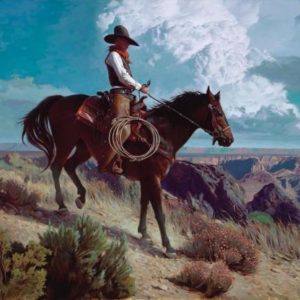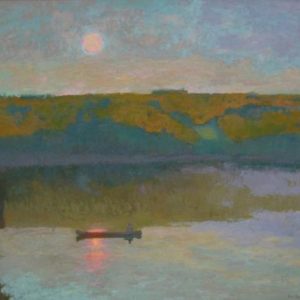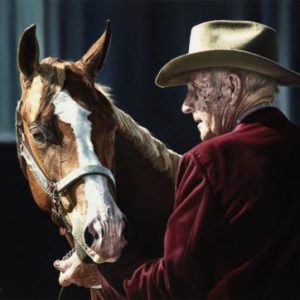Mark Maggiori fell in love with the American West when he was a 15-year-old on vacation with his uncle and cousin. It was so different from his home in Paris, France, that he couldn’t help but be charmed by the wide-open spaces, the rugged terrain, and the hard-working cowboys. But when he returned to France, his attention quickly returned to his skateboard and his studies, and the romance of the West was forgotten. Almost 20 years later, Maggiori found himself at the National Cowboy and Western Heritage Museum in Oklahoma City, Oklahoma. By then, he had finished his formal art
Read More
Archives for 2016 September-October Issue
A Visual Poet
California artist Dan Pinkham wants to leave behind a legacy. Yes, his paintings will continue to be his spiritual voice into perpetuity, but he wants there to be more. His studio, a 16th century replica of the Italian Chapel that Michelangelo used as a studio when he painted the Sistine Chapel, will be that legacy. Pinkham and his wife Vicki, along with a nephew and fellow artists, have spent years refurbishing this relic. In fact, when they first saw the property, slated for demolition, it presented a daunting undertaking that neither Pinkham nor his wife felt inclined to tackle. Besides,
Read More
‘This is My Calling’
Best known for his magnificent stone carvings, Oreland Joe also puts his artistic skills to good use in creating bronze sculptures, as well as paintings and jewelry. His creativity doesn’t end there, however. “I’ve ventured into filmmaking and am writing a book,” he says, adding that the process for both will take two to three years to complete. “The film is an historic documentary about a 4-year-old Ute boy who was stolen by the Cheyenne in 1849. He was called Yellow Nose and was adopted and raised by Spotted Wolf, head chief of the Northern Cheyenne. At age 12, there
Read More
‘There Was Always a Plan’
Patient and painstakingly precise as he creates masterworks in oil, Canadian artist Bruce Lawes evokes an equally dedicated passion when it comes to shaping his own artistic destiny. His first painting sale at the age of 12 confirmed his innate artistic abilities, but the direction that talent would take was not clarified until six years later, when his father brought home a stunning coffee table book titled “The Art of Robert Bateman.” “I was absolutely mesmerized by his imagery,” Lawes says. “It brought my love for nature into focus and defined my goal to be able to paint like Bateman
Read More
Putting Light Into the World
“I try to be attentive, as I walk through life. It’s a spiritual thing for me, as well as an artistic thing. I see inspiration as God’s gift to humanity. You just have to be open to it and tap into it. Painting is my way of saying ‘Amen’ visually, of saying I’m in agreement with the beauty and mystery of this world.” Those “amens” have not gone unnoticed by art lovers, who eagerly collect the paintings Michelle Dunaway creates, paintings in which she skillfully shares her love of the world—its people and its land. In each, she finds stories
Read More
I Just Have To Paint It
Jim Norton was, as he puts it, “scared to death.” He was pale and had a terrible headache, but he stood by his paintings, with a smile on his face, determined to suffer through what he anticipated was going to be a rather humiliating experience. The cause of Norton’s distress was his first showing with the prestigious Cowboy Artists of America (CAA). He was elected into membership in 1989, when he was just 34 years old, and was overwhelmed by the company he would be keeping—artists such as Howard Terpning, Robert Pummell, Roy Andersen, Jim Reynolds, and Ken Riley. Jim
Read More
The Studio of Jesse Powell
Last spring, California artist Jesse Powell moved his studio from Cannery Row to the Barnyard. Yes, you read that right. But, it’s not exactly what you might think. He spent eight years in a studio in the historic American Tin Cannery Building on Cannery Row in Monterey, California. That studio looked out on the Pacific Ocean from the third floor of the former home of one of the sardine canneries that had sprouted up during the 1920s and 1930s. The 12-foot-tall windows let in plenty of natural light, and the view was spectacular, but when a space opened up in
Read More







